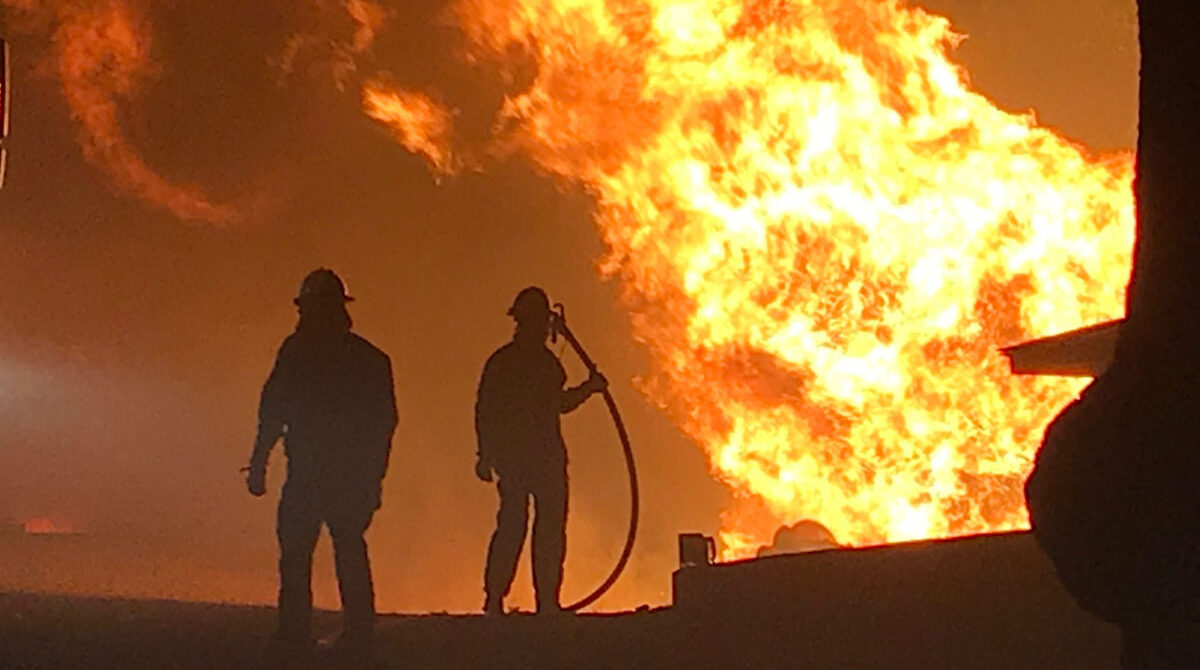
Fire Chief Buddy Peratt said the fuel load of dry vegetation this year increases the risk of wildland fires, particularly those started by fireworks.
In Apple Valley all fireworks are illegal
“It’s important that people understand that all fireworks, including those classified as ‘safe and sane,’ are illegal in Apple Valley,” Fire Inspector Jennifer Alexy told the Victorville Daily Press.

She said information about illegal fireworks is important for all residents, especially those who’ve recently moved to Apple Valley. “Sometimes people move here from down the hill or other areas, and they don’t realize that fireworks are illegal,” Alexy said. “They start using fireworks, unaware of the potential danger.”
How citations are issued: The Apple Valley Fire Protection District uses a “contactless citation process” in which citations are delivered by district personnel directly to the offender in person or by mail. An administrative citation is $1,000. If a fire official has proof of a renter’s possession or use of fireworks, the district can also cite the property owner.
“We’ll gather the information and send the owner a citation via certified mail,” said Alexy. “We’ll make sure owners are responsible for their tenants.”
QR code to report fireworks: Apple Valley Fire uses a QR code to report the possession, sale, or use of fireworks in town. “If someone calls our office to report fireworks during the weekend,” says Alexy, “we may not get the message until Monday morning. The QR code allows us to get the information right away.”
Fireworks are literally explosively loud, panicking pets and many veterans, and can mean trauma for people with with sensory issues. The debris and chemicals left over from fireworks can harm the environment, pollute the air, and leave behind hazardous waste.

Back in 2000 at least 10 fires were started on and around Mt. Rushmore during fireworks displays. Perchlorate, which is now in the water at the national park after numerous fireworks shows held there, has been linked to fetal and infant brain damage — 11 fireworks shows between 1998 and 2009 contaminated the water at the memorial. The fireworks explosions left perchlorate on the ground, and it worked its way into the water table. In 2016 a USGS report showed that a maximum perchlorate concentration of 54 micrograms per liter was measured in stream samples at Mt. Rushmore between 2011 and 2015 — about 270 times higher than in samples collected from sites outside the memorial.
Wildfires: During those 11 shows at least 20 documented wildfires were ignited by fireworks in the middle of the wildfire season.
Garbage: The trash dropped by the exploding shells onto the National Monument and the forest can never be completely picked up. Left on the ground are unexploded shells, wadding, plastic, ash, pieces of the devices, and paper — that can never be totally removed from the very steep, rocky, rugged terrain.
NOTE: Bill Gabbert, who founded this website and ran it for many years, was the fire management officer at the Mt. Rushmore site during some of that time.











